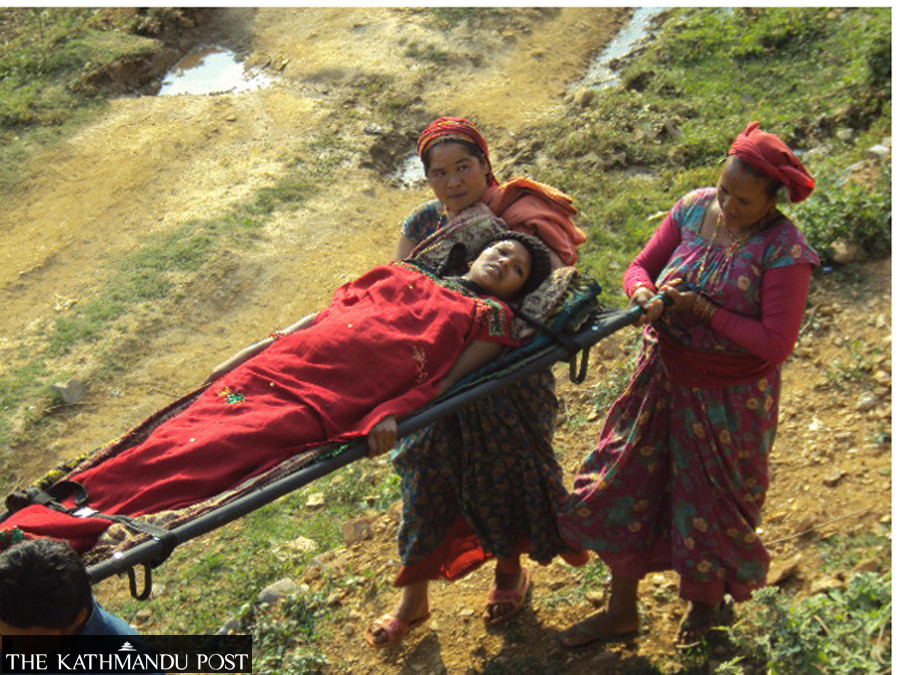Health
Anti-shock suits to be used to reduce maternal deaths from postpartum bleeding
Excessive bleeding is a major cause of maternal deaths in Nepal.
Arjun Poudel
The Ministry of Health and Population has decided to purchase non-pneumatic anti-shock garments to lessen maternal deaths from excessive bleeding.
Excessive bleeding during or after childbirth is a major cause of maternal deaths in Nepal, which the authorities have been struggling to lessen for years.
Officials say the new move aims to curb ongoing maternal deaths from excessive bleeding during childbirth.
“We have already prepared specifications to purchase non-pneumatic anti-shock garments,” said Nisha Joshi, a public health official at the Family Welfare Division under the Department of Health Services. “We have been searching for a vendor for supply of the first-aid device.”
The non-pneumatic anti-shock garment is a low-cost first-aid device that limits persistent postpartum haemorrhage (PPH). The technology was used to develop the device where external pressure is applied to a woman’s lower body to drive the blood upward.
Experts say the device reduces blood flow to the uterus and treats hypovolemic shock, an emergency condition in which severe blood or other fluid loss makes the heart unable to pump enough blood to the body. The special suit can keep a woman with postpartum haemorrhage alive for up to 48 hours. Without the suit, the woman may bleed out within 30 minutes. The device buys critical time to transfer a patient to a healthcare facility and provide her treatment. It is also lightweight, washable and can be reused, officials said.
“This device is in use in many low and middle-income countries of Africa and Asia,” said Joshi. “It costs around 70 US dollars and we have been planning to buy four to five such devices for each hospital.”
According to officials, the device will be available in ambulances as well and the ambulance driver will be trained to use the device on women in labour. If the device proves effective, it will be provided to all state-run hospitals across the country.
Postpartum haemorrhage – or severe bleeding after childbirth – is the largest direct cause of maternal mortality worldwide and is responsible for more than a quarter of the 300,000 estimated deaths each year.
Every year, hundreds of women in Nepal succumb to preventable deaths from excessive bleeding and high blood pressure, according to a report in the national census by the National Statistics Office, which was carried out in 2021.
The report, however, shows a significant decline in the maternal mortality rate; hundreds of women countrywide, continue to die due to excessive bleeding and high blood pressure.
The report showed that in every 100,000 live births, 151 women died from maternity-related complications. In the fiscal year 2022-2023, 107 women died of maternity-related complications, according to the Health Ministry.
Nepal had reduced the maternal mortality rate from 539 per 100,000 births in 1996 to 239 per 100,000 births in 2016—for which the country even received a Millennium Development Goals award. The report showed that 88 maternal deaths were prevented in every 100,000 live births between 2016 and 2021.
Nepal missed its own targets of reducing maternal deaths in 2020 and 2022.
The country needed to limit maternal deaths to 125 per 100,000 births in 2020 and to 116 in 2022.
As part of its efforts to reduce maternal deaths, the Health Ministry has made it mandatory for women to make eight antenatal care visits and three postnatal care visits. The Health Ministry has introduced various programmes, including free institutional delivery service, and travel allowances for those opting for institutional delivery and antenatal visits. The ministry has also distributed misoprostol, a medication used to treat postpartum bleeding in new mothers, through female community health volunteers.
Nepal’s target under the UN’s Sustainable Development Goals is to reduce the maternal mortality rate to 75 per 100,000 births by 2030.




 10.12°C Kathmandu
10.12°C Kathmandu














